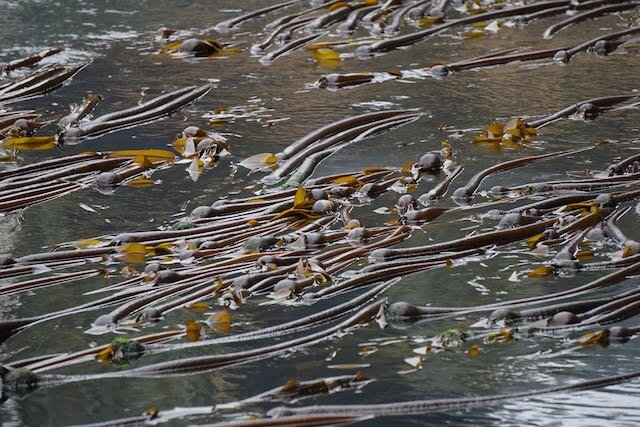
Francis Bacon | A Handy Book of Curious Information
“.. on April 9, he died of the disease now known as bronchitis. Macaulay adds, "In the last letter that he ever wrote, with fingers which, as he said, could not steadily hold a pen, he did not omit to mention that the experiment of the snow had succeeded excellently well."

Lucian’s Trips to the Moon | The Public Domain Review
Q. Why do we dream about the impossible?
A. Because nothing is impossible.
Q. How do you that “nothing is impossible” is true?

Comics: Old-School Distance-Learning Tools | Science History Institute
“Military training is just one example of how comics have been used in informal education for generations. But despite having taught us scientific principles and helped us understand the weather, comics have maintained a persistent reputation for being crude, cheap, and unsophisticated, if popular and fun. Advocates for comics have never been able to shake the vague suspicion that someway, somehow, a medium like that can’t possibly be good for serious learning.”

Scientists Use Seaweeds to Travel Back in Time | Hakai Magazine
“In a new study published this past June, researchers from the Monterey Bay Aquarium examined a collection of dried, pressed seaweeds—dating back over 140 years—to learn what ocean conditions in the bay were like in the early 19th century.”

Cracking a Rembrandt Mystery | Cosmos Magazine
“The Ashmolean museum in Oxford recently announced that a portrait by Rembrandt, long thought to be a fake created after his death, was indeed an authentic work by the Dutch master. The announcement came after a study of the portrait’s wood panel.”

Why the First Drawings of Neurons Were Defaced | Quanta Magazine | 2017
“Now it is horrible, but at this time in history it was not,” Toledano said. “In the National Library and in the universities at the time, this was normal. The most important thing was that the stamp was placed in the center of the page of the books and the drawings and so on.”

Old Paintings Reveal How Fruits and Vegetables Have Evolved Over the Centuries | Vice
"Plant-based food is lavishly depicted by thousands of artists throughout the ages and offers a vast and unique insight into the stunning evolution in shapes and colors of our modern-day groceries," they wrote in an article published in the journal Trends in Plant Science.”

Aurora Borealis | Book Excerpt
“With difficulty I at length persuaded some of them to listen to me, when I assured them that all they saw was a common phenomenon in more northern latitudes. I also endeavored to convince some of the strangers nearest to me that there was no cause for alarm; but I could gain no converts.”
Hashime Murayama and the Art of Saving Lives | Distillations | Science History Institute
“There’s an old adage that says life is short, art long. And in certain circles Murayama’s wildlife art remains celebrated to this day. But even though he took Papanicolaou’s assignment under duress, Murayama’s work on cervical cancer had the more lasting legacy—art that helped make millions of women’s lives longer.”
In a Global Health Crisis, Science Museums Have a lot to Offer – Even While Shut | Apollo Magazine
“The museum doors are firmly shut. Yet this is also an opportunity for great institutions to enrich our personal stories. Thanks to a quarter of a century of digitisation and enthusiastic experimentation, not to mention the improvements of the internet, museums are allowing online visitors to wander through collections, past exhibitions and virtual displays.”
Who Invented Radio: Guglielmo Marconi or Aleksandr Popov? | IEEE Spectrum
“Now, it’s not always the case that museums know what’s in their own collections. The origins of equipment that’s long been obsolete can be particularly hard to trace. With spotty record keeping and changes in personnel, institutional memory can lose track of what an object is or why it was important.”
The Carouser and the Great Astronomer | Nautilus
“Had history turned out differently, we would know hardly any of these details. A young man with a dubious idea about invisible Platonic solids hovering in space, anxious to prove that there could only ever be six planets; and another young man, the disgraced father of an illegitimate son, on his way to battle the Turks: The litter of history could easily have blurred the outlines of their lives.”
Science History: Nathaniel Kleitman Helps us Rest Easier | COSMOS Magazine
“When Kleitman died in California on 13 August 1999, aged 104, a University of Chicago obituary described him as “the world's first scholar to concentrate entirely on sleep” and “universally recognised as the father of sleep research”.
It says that before him, “few scientists had systematically investigated the intricacies of sleep, which had previously been dismissed as a state of quiescence”.
The Rise and Fall of Polywater | Science History Institute
“In April 1970 the American Chemical Society held a symposium at Lehigh University, in the steel town of Bethlehem. An entire session focused on water, including anomalous water. A news conference was scheduled to follow. Reporters and the 300 attendees all wanted to better understand the nature of polywater. Passions were high among both skeptics and believers: a fight was simmering.”
The Greatest Unknown Intellectual of the 19th Century | The MIT Press Reader
“Emil du Bois-Reymond proclaimed the mystery of consciousness, championed the theory of natural selection, and revolutionized the study of the nervous system. Today, he is all but forgotten.”
The Accidental Experiment That Changed Men’s Lives | The Atlantic
“Now, 50 years later, the Vietnam draft lotteries have become the drosophila of the social sciences: the model organism for researchers to discern how a life-changing intervention carries implications for the individuals who experienced it, versus those who escaped it by chance.”
Nicolas-Jacques Conté and the Pencil | Scihi.org
“As well as his process for mixing leads, Conté is also generally credited with inventing the machinery needed to make round leads, and he can truly be said to be the creator of the pencil. Indeed, for about 100 years, pencils in France were known as the crayons Conté and of course pencils continue to be made with the Conté brand name to this day.”
Music of the Squares | The Public Domain Review
“The fact that we derive pleasure from hearing certain concordant intervals, that derive from what is known as the overtone series, for Hay demonstrates that nature and humanity are governed by the same principles.3 He takes this further: the physiological affinity between seeing and hearing means that these laws extend not only into music but into the visual world too.4 After all, he observes, “the eye and the ear are various in their modes of receiving impressions; yet the sensorium is but one, and the mind by which these impressions are perceived and appreciated is also characterised by unity.”5Since both sight and hearing are processed by the mind, they should be governed by similar principles.”